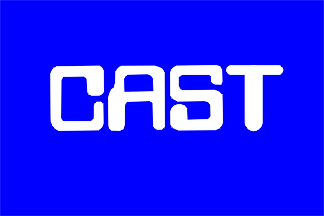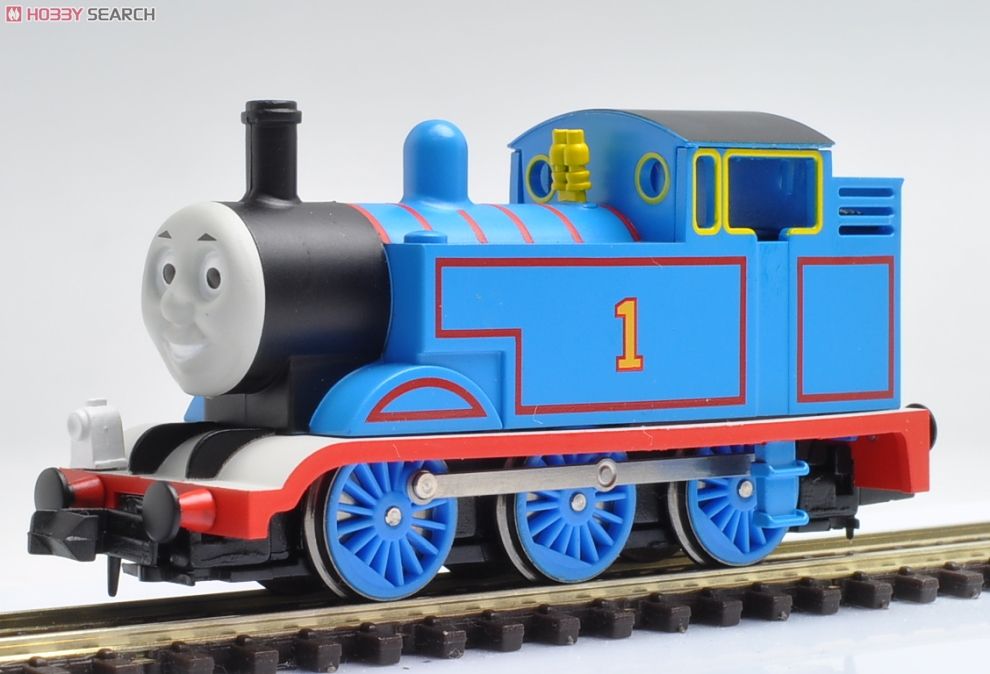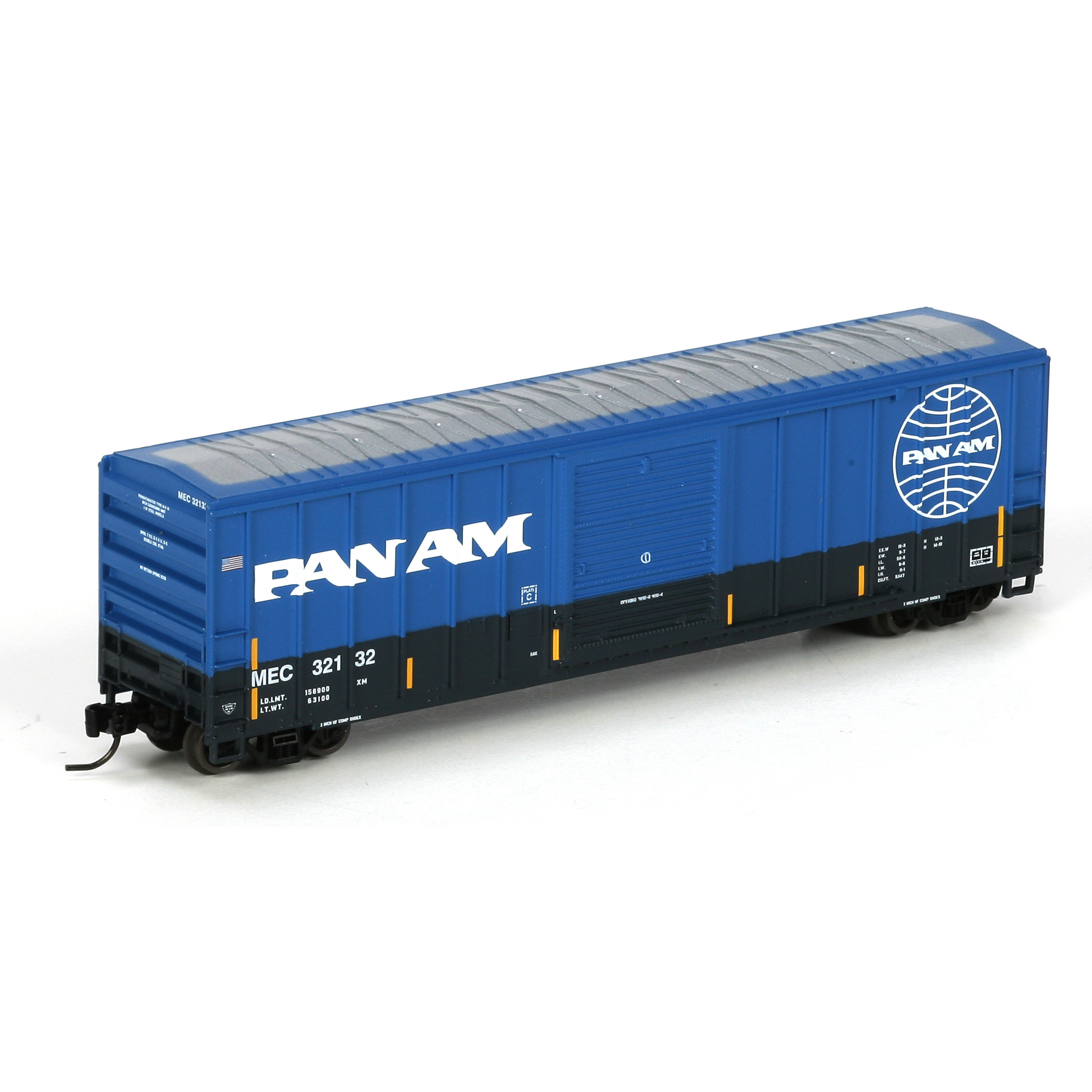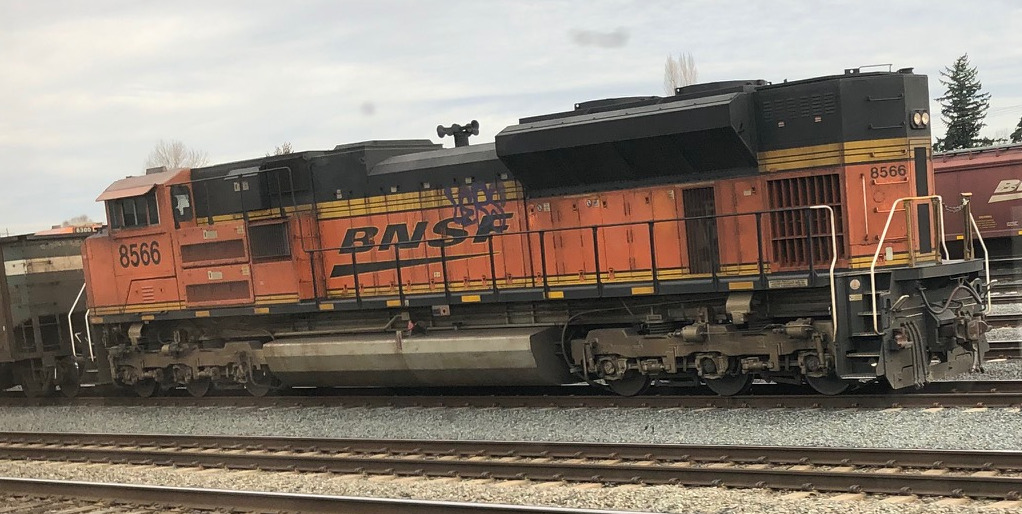Specific Item Information: Heritage units feature unique paint schemes to honor their respective railroads.
Model Information: Fox Valley introduced this model in 2014 with a second run in 2015. It is a modern split-frame locomotive with flywheels and other standard 3rd generation features. Specifically you will find:
Multiple Variations;
Front and Rear ditch lights;
High or Low Headlights;
Etched Metal Details;
Standard Cab;
Isolated Cab;
FVM's Sharp Paint and Lettering;
Wire Grab Irons;
Painted Handrails and Step Edges;
Correct Brass Horn .
The user-applied detail parts are a bit intimidating even for an intermediate modeler, but if you have the skills, you can make this model look awesome.
The user-applied detail parts are a bit intimidating even for an intermediate modeler, but if you have the skills, you can make this model look awesome.
DCC Information: Accepts NEM-651 plug-in decoder.
Prototype History: The EMD SD70 is a series of high-powered, single engined 4,000hp to 4,300hp, diesel-electric locomotives produced by Electro-Motive Division (EMD). All locomotives of this series are hood units with C-C trucks. Production commenced in late 1992 and since then over 4,000 units have been produced. The most produced models of the series are the SD70M, SD70MAC and SD70ACe models. All SD70 models were delivered with the self-steering radial truck HTCR , then from SD70ACe and SD70M-2 models, with non-radial HTSC truck. The radial truck allows the axles to steer in curves which reduces wear on the wheels and railhead.
The SD70ACe AC-traction diesel locomotive (most in the industry simply call them SD70 "Ace" or "Aces") is the successor to the older SD70MAC. It was first introduced in 2004, and has been in production since 2005. It was originally designed to comply with EPA Tier 2 locomotive emissions regulations. Beginning in 2012, newly built SD70ACe's were EPA Tier 3 compliant. SD70ACes are equipped with EMD's 16-710-G3C-T2 prime mover, rated at 4,300 horsepower (3,200 kW); later Tier 3 models are rated at 4,500 horsepower (3,400 kW). The model is still in production as EMD's primary long-haul domestic locomotive.
Although mechanically similar to earlier SD70 units, the SD70ACe rides on a new underframe and uses mostly new sheet metal above the frame. Electrical cables and air lines have been routed beneath the walkways on opposite sides, allowing easier access for maintenance. Continuing the designs of the SD80 and SD90 series, the radiator on the locomotive is nearly as wide as the cab, the center hood section is a step down below the roofline, and the dynamic brakes have been moved to the rear of the hood. The SD70ACe uses the cab design of late-model SD90MAC-H units, which uses rectangular window glass and is externally different from the two cab variations used on earlier SD70M and SD70MAC units. In 2008, EMD standardized the isolated cab on subsequent SD70ACes after non-isolated cab units were restricted from leading on BNSF Railway due to excessive cab vibration. Purchasers included ArcelorMittal, BNSF Railway, Canadian National Railway, CSX Transportation, Ferromex, Kansas City Southern Railway, Montana Rail Link, Norfolk Southern Railway, CVG Ferrominera Orinoco, Union Pacific Railroad, Quebec North Shore and Labrador Railway, BHP Billiton, and shortline Arkansas and Missouri Railroad.
Read more on Wikipedia, on American-Rails.com and on Locomotive wiki.
Full EMD SD70ACe data sheet on The Diesel Workshop.
The SD70ACe AC-traction diesel locomotive (most in the industry simply call them SD70 "Ace" or "Aces") is the successor to the older SD70MAC. It was first introduced in 2004, and has been in production since 2005. It was originally designed to comply with EPA Tier 2 locomotive emissions regulations. Beginning in 2012, newly built SD70ACe's were EPA Tier 3 compliant. SD70ACes are equipped with EMD's 16-710-G3C-T2 prime mover, rated at 4,300 horsepower (3,200 kW); later Tier 3 models are rated at 4,500 horsepower (3,400 kW). The model is still in production as EMD's primary long-haul domestic locomotive.
Although mechanically similar to earlier SD70 units, the SD70ACe rides on a new underframe and uses mostly new sheet metal above the frame. Electrical cables and air lines have been routed beneath the walkways on opposite sides, allowing easier access for maintenance. Continuing the designs of the SD80 and SD90 series, the radiator on the locomotive is nearly as wide as the cab, the center hood section is a step down below the roofline, and the dynamic brakes have been moved to the rear of the hood. The SD70ACe uses the cab design of late-model SD90MAC-H units, which uses rectangular window glass and is externally different from the two cab variations used on earlier SD70M and SD70MAC units. In 2008, EMD standardized the isolated cab on subsequent SD70ACes after non-isolated cab units were restricted from leading on BNSF Railway due to excessive cab vibration. Purchasers included ArcelorMittal, BNSF Railway, Canadian National Railway, CSX Transportation, Ferromex, Kansas City Southern Railway, Montana Rail Link, Norfolk Southern Railway, CVG Ferrominera Orinoco, Union Pacific Railroad, Quebec North Shore and Labrador Railway, BHP Billiton, and shortline Arkansas and Missouri Railroad.
Read more on Wikipedia, on American-Rails.com and on Locomotive wiki.
Full EMD SD70ACe data sheet on The Diesel Workshop.
Road Name History: 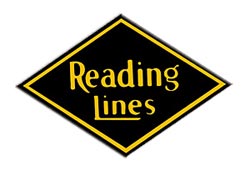 Let’s get a couple of quick clarifications out of the way first. Reading rhymes with bedding and is not “reading” a book. Second, the only “Reading Railroad” is on the Monopoly game board. Its actual name was “Reading Company” with “Reading Lines” used on logos and advertising.
Let’s get a couple of quick clarifications out of the way first. Reading rhymes with bedding and is not “reading” a book. Second, the only “Reading Railroad” is on the Monopoly game board. Its actual name was “Reading Company” with “Reading Lines” used on logos and advertising.
The Reading Company, usually called the Reading Railroad as was enshrined by the Monopoly board game, and boasting a predecessor company officially founded under the name the Philadelphia and Reading Railway Company, operated in southeast Pennsylvania and neighboring states from 1833 through 1976. Until the decline in anthracite loadings in the Coal Region after World War II, it was one of the most prosperous corporations in the United States.
Reduced coal traffic coupled with highway competition and short hauls forced it into bankruptcy in the 1970s. The railroad was merged into Conrail in 1976, but the corporation lasted into 2000, disposing of real estate holdings.

The Reading Company, usually called the Reading Railroad as was enshrined by the Monopoly board game, and boasting a predecessor company officially founded under the name the Philadelphia and Reading Railway Company, operated in southeast Pennsylvania and neighboring states from 1833 through 1976. Until the decline in anthracite loadings in the Coal Region after World War II, it was one of the most prosperous corporations in the United States.
Reduced coal traffic coupled with highway competition and short hauls forced it into bankruptcy in the 1970s. The railroad was merged into Conrail in 1976, but the corporation lasted into 2000, disposing of real estate holdings.
Brand/Importer Information: Fox Valley Models is a small supplier of
model railroad and related products. FVM
started by finding solutions to different
challenges that model railroaders were
faced with. Our first products resulted
from a need to equip custom built
passenger cars with tinted windows made
of an ideal material; thin, flexible, easy to
cut, simple to install, available in multiple
colors and be affordable. We met those
needs and even included a frosted
version for the car's lavatory windows.
Other challenges inspired additional products including wooden grade crossings, trestles and different lineside structures. As our product line expands, input and requests from friends and customers help shape the product selection further.
Future products, under development, include more parts, structures, details and rolling stock. We strive to offer a good quality product at an affordable price.
Other challenges inspired additional products including wooden grade crossings, trestles and different lineside structures. As our product line expands, input and requests from friends and customers help shape the product selection further.
Future products, under development, include more parts, structures, details and rolling stock. We strive to offer a good quality product at an affordable price.
Item created by: gdm on 2017-04-19 08:15:39
If you see errors or missing data in this entry, please feel free to log in and edit it. Anyone with a Gmail account can log in instantly.
If you see errors or missing data in this entry, please feel free to log in and edit it. Anyone with a Gmail account can log in instantly.







